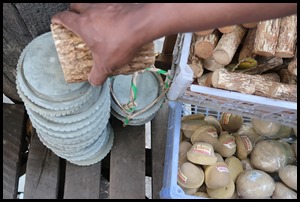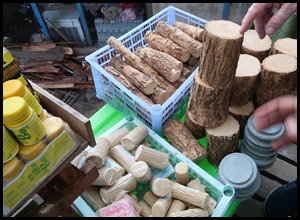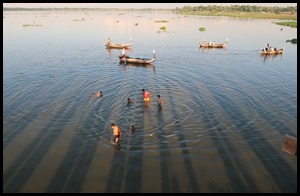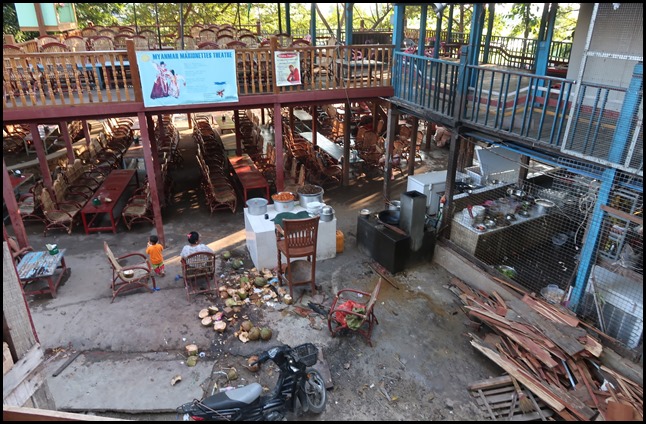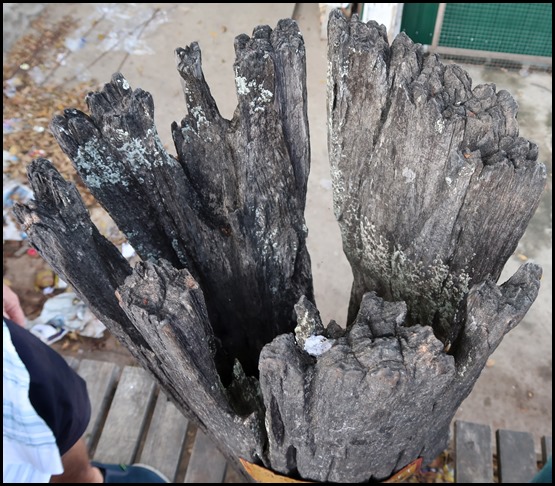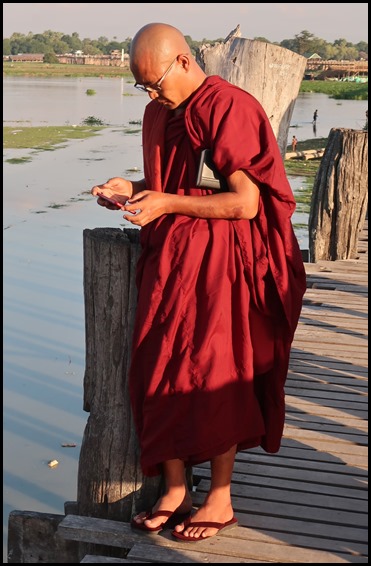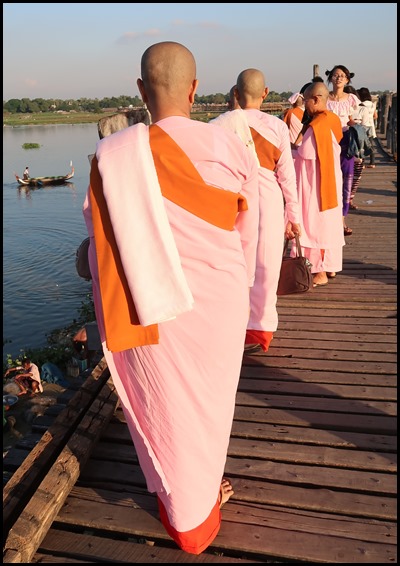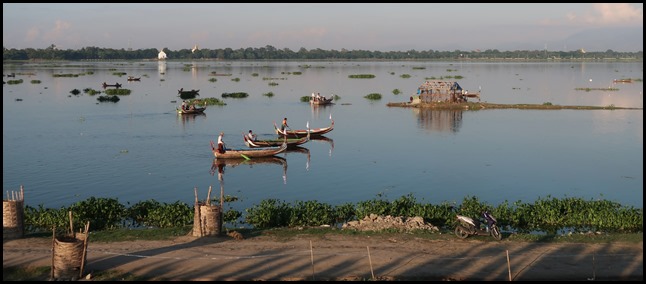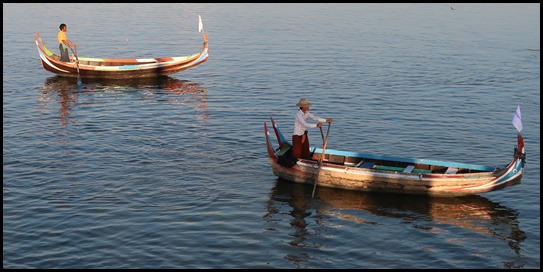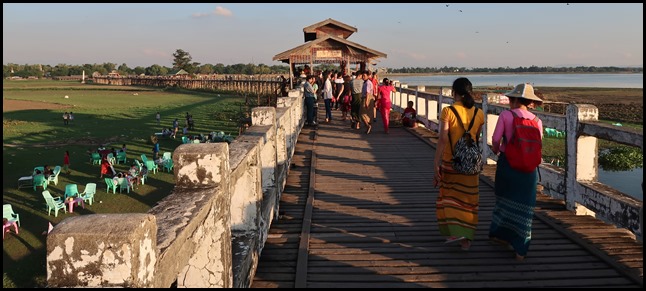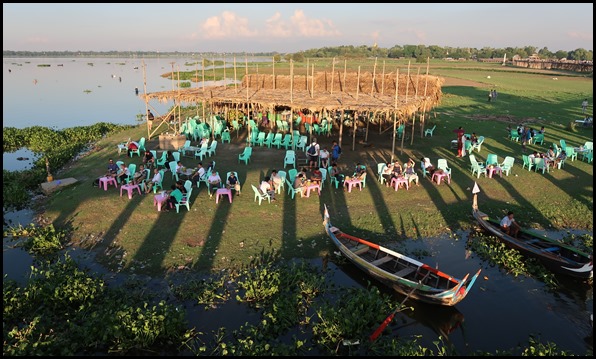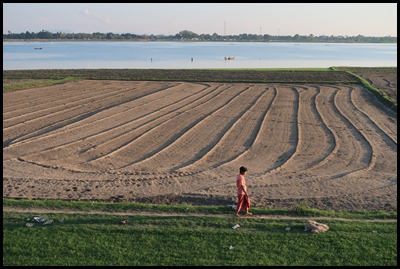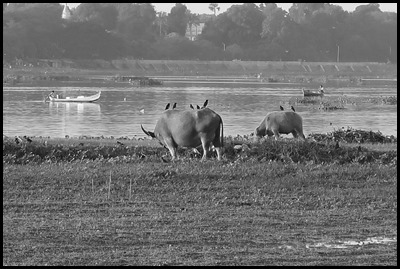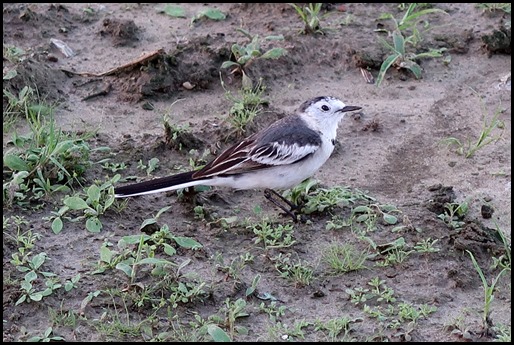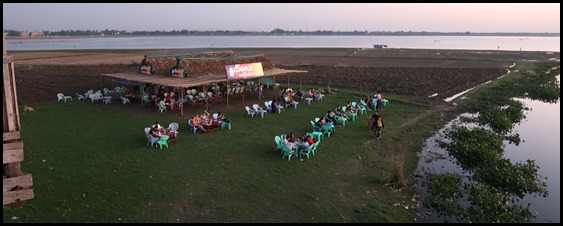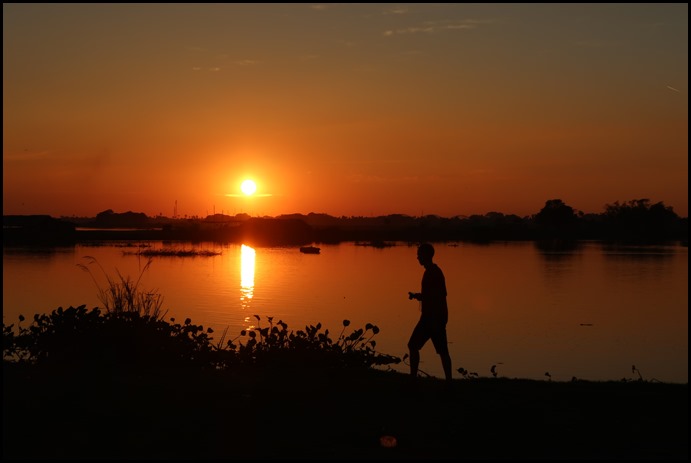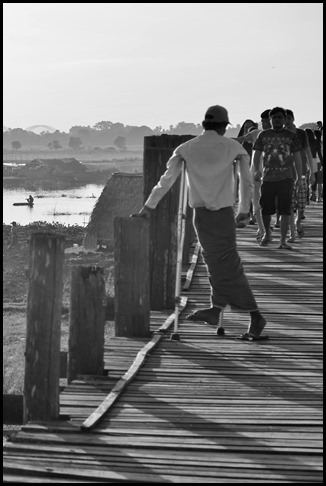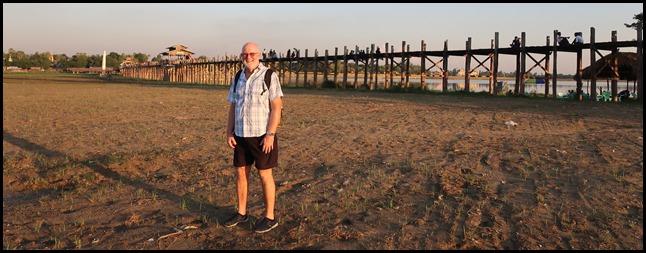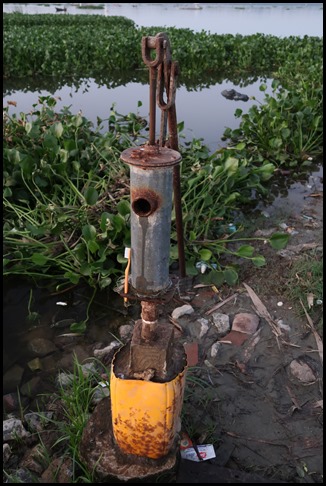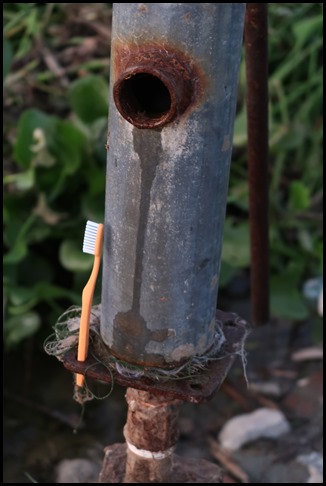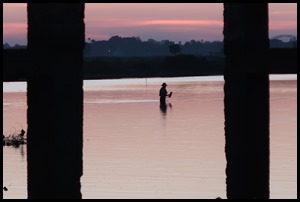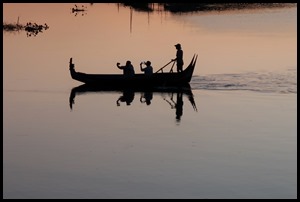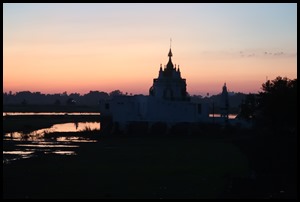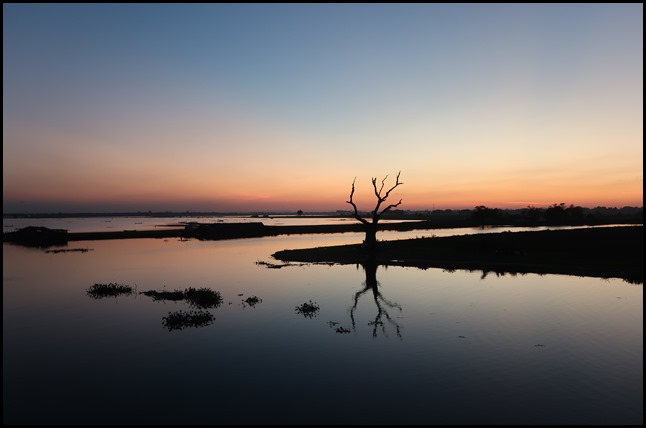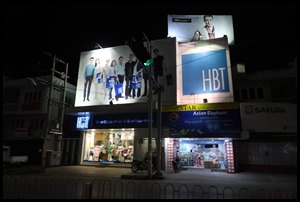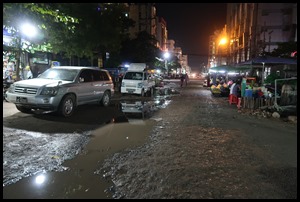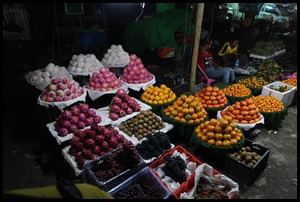U-Bein Bridge

|
The U-Bein
Bridge
 After our stops at the marble yard and the teak carvers
we headed out of town toward Lake Taungthaman, lots
to see as fishermen and ducks scruffed about.
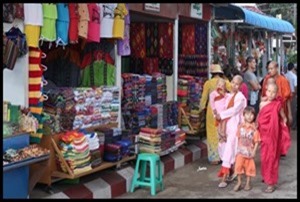 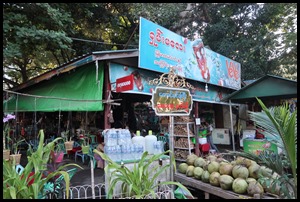 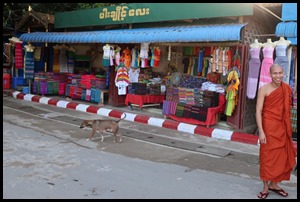 Fifteen minutes later Zaw parked our taxi-truck and led
us through a street crammed with
shops.
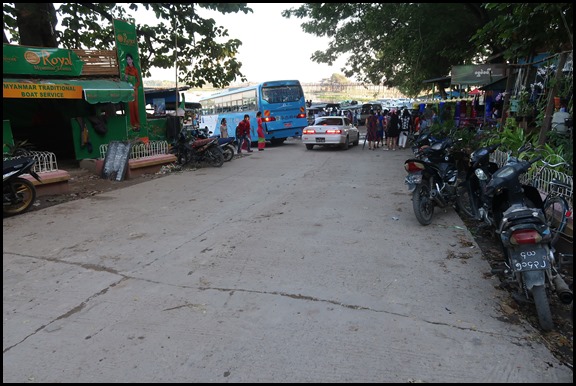 Zaw had us stand on this spot and told us that in July and August the lake would touch our toes. Hard to
believe looking at the car park, just beyond the coach we could make out the
bridge.
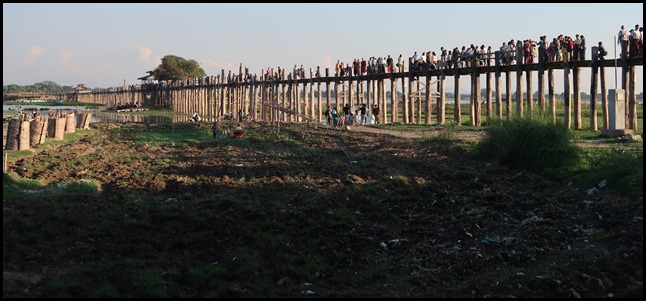 Now high and dry the area near the bridge is used as
pasture and for vegetable growing.
 Eleven kilometres south of Mandalay is the U-Bein Bridge, the longest teak bridge in the world.
The bridge has become one of the region’s most
popular tourist attractions and most photographed features, sunset is the most popular time but we wanted to walk the
bridge before settling for pictures.
1.2 kilometres in length, it spans Lake Taungthaman (or Taung Tha Man Lake, we are getting used to everything having at least two different spellings), it has a gentle curve and is supported by 482 spans made up of 1086 posts hammered into the bottom of the shallow lake. The teak planks used to make the walkway were reclaimed from the old palace at Inwa, the former Burmese capital city of Amarapura. King Mindon began dismantling most of the palace buildings, shipping them to Mandalay seven miles north when he moved the capital. Mayor U-Bein snagged the spare teak and the bridge was built between 1849 and 1851, although dates vary depending which information you read.
Zaw took us to the start of the bridge and pointed out a stall selling tanaka chunks. The bark is rubbed on a concrete plate with water until a paste-like, cream substance appears, this is what (mostly ladies but men and children too) is put on their faces. You can buy the tree stump, stripped bark through to the paste in a pot. Looking out over the water children swam and tourist boats headed to their sunset positions. Zaw left us and off we went.
Hard to believe as we looked down that all this area will be underwater in the flood season.
We took a closer look at one of the teak posts. Still doing its job but quite eroded.
We are getting used to the sight of monks and mobiles and lady monks too.
A crazy time at the beginning of the bridge running the gauntlet of salespeople but nearing the middle we got to enjoy the scenery.
Empty boats paddling toward the bank in the hope of picking up fares .
The middle has reinforced concrete which lends support to the bridge, unusual here to have a handrail.
Down to our left a bar doing a roaring trade in selling fresh coconuts with straws to tourists.
To our right a newly ploughed field. Chaps scruffing about.
Little girl enjoying the bugs and moths.
The second rest stop curry aroma was divine.
Silhouette to be going on with.
A sobering and very sad sight.
Beyond the second rest stop. We go down the steps and seek our place for THE sunset picture.
In position. Now we wait for the sun to go down.
Black and white test run.
The U-Bein Bridge at sunset – just as we wanted it.
As we walked back toward the first rest stop we saw an old water pump, loaded with a toothbrush.........
On our walk back we saw some post-sunset images.
On our way back it is still a surprise to see very western shops when we are so used to the street market look. Time to get some fruit from our favourite lady opposite our digs. ALL IN ALL AN ICONIC
FEATURE
VERY PRETTY IN A RAMSHACKLE
WAY |
